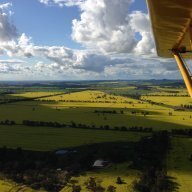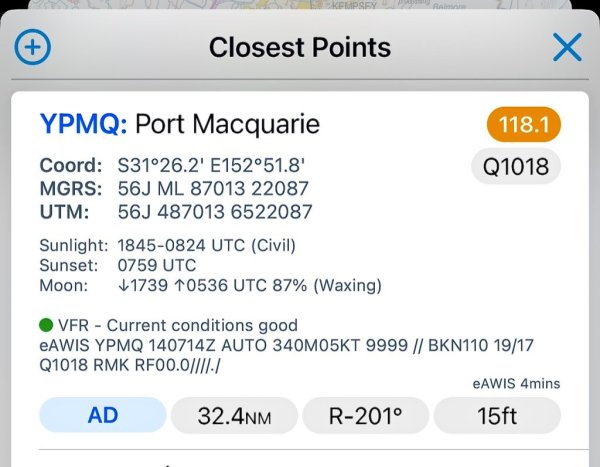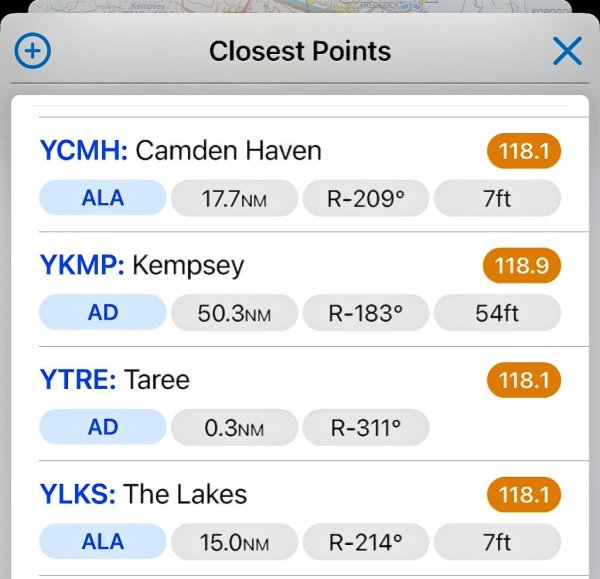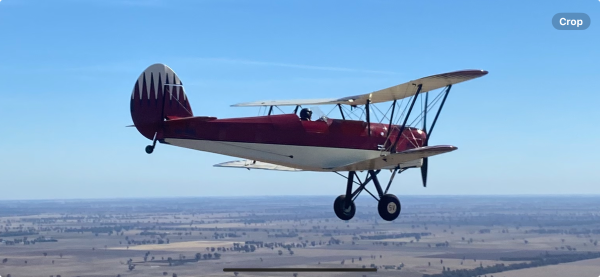-
Posts
1,033 -
Joined
-
Last visited
-
Days Won
13
Content Type
Profiles
Forums
Gallery
Downloads
Blogs
Events
Store
Aircraft
Resources
Tutorials
Articles
Classifieds
Movies
Books
Community Map
Quizzes
Videos Directory
Posts posted by Roundsounds
-
-
3 hours ago, Mike Gearon said:
Well, it’s over a year since I brought the subject up. I couldn’t be more sure after this time of what should be going on.
1. Agreed on minimal calls. Dangerous to plug up the CTAF with 3 calls.
2. I’m very sure now (was somewhat unsure at times before….) There should be a mandated downwind call. There should be advisory of making final call if an aircraft is at the departure end or nearby taxiing.
Mandating a call gives certainty to instructors, students and general aviation pilots that no matter where they visit they will always expect the same call to be made.
Base is the useless call. It doesn’t help aircraft joining cross, downwind or base.
Base doesn’t help aircraft that are at departure waiting to take off. Final does.
When I’m in USA and suitably bored I’ll write a letter to casa for somebody to file away and ignore.
A downwind call suits ATC at Class D airports (formerly GAAP) for sequencing. A base call is way more useful at Class G airports.
-
 1
1
-
 2
2
-
-
1 hour ago, skippydiesel said:
Hi Jerry,
I had forgotten just how badly writen, full of apparent contradictions, crazy prerequisites & exceptions, the "Security requirements for pilots" & the associated document, is.
Here are a few examples:
- Pilots under 18 must have an ASIC (2 years)
- Pilots under 18 can not apply for an AVID (5 years)
- AVID's do not give the holder access to airside/security area of an airport.
- You can be escorted by an AVID holder ithrough the security area
- To hold an AVID you must have a currentaviaton medical (sick people being known security risks)
- ASIC would seem to be aimed at work related needs (not private pilots)
- Red ASICS give you some access to security controlled/airside areas
- Grey ASICS do not give you access to airside- why would you want or need one?
- White ASICS give sweet FA.
-
Then there is a VIC - Bureaucracy gone completely made
"A visitor identification card (VIC) can be issued to a person, if the person needs to enter a secure area of a security controlled airport for a lawful purpose.
Followed by more insanity the Temporary AirCrew Card
-
"A Temporary Aircrew Card (TAC) can be issued by an aircraft operator if either of the following applies: the person holds a valid red or grey ASIC, however, the person does not physically have their ASIC on them"
Further confusion;
(1) Subject to subregulations (4), (4A) and (5), regulations 3.05 to 3.09 and subregulations 3.18(2) and 3.26(2):
(a) a person in the airside security zone of a security controlled airport must properly display a valid red ASIC; and
(b) a person in a secure area (other than the airside security zone) of such an airport must properly display either a valid red ASIC or a valid grey ASIC.
4A) At a security controlled airport from or to which no screened air service operates, paragraphs (1)(a) and (b) apply only during traffic periods.😈
Bottom line is if you’re a private pilot and not based at or regularly operating from a Security Controlled airport get an AVID. You could argue any pilot who doesn’t have the need for an ASIC is breaking the law by obtaining one. When I have to pay for my own ASIC I’ll be switching to an AVID.
-
 1
1
-
On 11/4/2025 at 6:37 PM, facthunter said:
You've been told that before. You're flogging a Dead horse. I don't like it either/ It doesn't even count points towards a Passport being issued. RAAus represents the CASA Only something LIKE AOPA can do anything. . Nev
RAAus now RAWas
-
54 minutes ago, facthunter said:
Bit judgemental . They can't say much when being threatened with Prosecution. Nev
Just an acknowledgement would be ok
-
 1
1
-
-
6 hours ago, jackc said:
¡CEO told me last week, they will get around to it shortly.
Snow jobbing a Coroner does not go well, when the relevant people get caught.Get around to it shortly? It’s not like they didn’t know the outcome, should’ve had something out to members the day the report was released. Says a lot about the culture of the place.
-
-
On 6/2/2025 at 12:20 PM, facthunter said:
Records of the minutes must be retained by LAW, but it's very inhibiting to make them ALL public. It's not hard to envision the problems. Your liability as a member seems to be limited to ONE Dollar. OFFICE bearers have a greater exposure to risk and they have to be covered also. It's also a non profit Organisation, which is interesting. Nev
It will be interesting to see what happens to the various office bearers over time. I’m not sure whether you’ve read the Coroner’s report? It seems some actions by office bearers were not in accordance with documented procedures. The issues of concern to the Coroner relate to action / (inaction?) once the question of validity of the pilot’s RPC came to light within the organisation.
-
45 minutes ago, skippydiesel said:
I missed nothing of your comment - I merely point out that humans have very poor/nil ability to judge air speed, when at altitude (probably above 100 ft from the surface). The " ..appropriate configuration and the appropriate attitude and power setting.." is all very well, until you start down Base/Final (changing all three of the settings you have quoted) to an unfamiliar runway in gusting conditions, with no ASI.
Not suggesting it can't be done (as you have pointed out and I have done on at least two occasions) however it's a long way outside my comfort zone and I expect the same for most recreational level pilots.
You can't escape the species limitations which can, to some extent, be mitigated by remaining cool, applying much of what you suggest - Give me an ASI to be sure (I have a backup unit in my aircraft).😈
Your response simply reinforces my comments. You do not need to nor should judge / sense airspeed, particularly when below 100’ AGL, the effect of wind has resulted in many low level stalls by mistaking ground speed as airspeed.
You need to know the appropriate attitudes and power settings for various configurations and phases of flight. If they are set the airspeed will follow, no judgement required. I have logged over 6500 hours of flight instruction in tandem seating aeroplanes without ready access to flight instruments. This taught me to rely on attitude and airspeed, which I had been taught but really only made sense when that’s all I had. Students would often look around and ask where my ASI, ALT, Tacho were hidden as I was able to fly so accurately - nothing to with any special skills, just because I was flying visually attitude and setting power by ear. Until you are actively taught these skills you won’t develop them.
You should be setting the appropriate power and attitude for the phase of flight, allow them to take effect, trim, then check airspeed.
I’ll guarantee your backup ASI uses a common pitot / static source, so will only display same invalid reading. Most errors are the caused by a fault in the pitot / static system.-
 2
2
-
 2
2
-
-
48 minutes ago, skippydiesel said:
I agree that the instruments you have nominated are not critical for safe flight, especially within the training (familiar) area.
The ones you have not nominated are, especially for the student. Attitude, power & height are relativly easy for a human to judge. Not so airspeed (unless in an open cockpit), when in the circuit/on approach to land. It can be done of course but an ASI is a great help😈
You’ve totalled missed the point!
if you set the appropriate configuration and the appropriate attitude and power setting, airspeed will be correct - no need for an ASI. You’d be surprised as to the number of aeroplanes I’ve flown over the years with inaccurate ASIs. The typical
problem being pin holes in the pitot or static lines.
-
 1
1
-
 3
3
-
-
18 hours ago, jackc said:
Just my useless opinion here. The technology in these aircraft is too overwhelming for many older students, to come to grips with.
Glass Cockpits should be an endorsement only, not a training platform.
Only fixed pitch props as well. Hiding in my bomb shelter!
I agree with the excess of technology, not necessarily about the effect of age.
The basic stick and rudder skills are best taught with minimal instrumentation. This forces trainees to rely on visual attitudes rather than a PFD. When I had my flying school we operated one basic trainer without a VSI, DI or AH, it was ideal for the initial training. You need to establish those basic skills, then build on them.i would not send a student solo until they could complete a circuit with the instrument panel covered. You can see attitudes, hear power settings and judge height way more reliably than expected if trained to do so.
-
 4
4
-
 1
1
-
 1
1
-
-
On 13/12/2024 at 2:52 PM, Possum1 said:
CASA still wants to hang on to the Class 5 medical requirement as if this is necessary for proficiency in communicating with ATC. The rest of it is very welcome news.
I wonder if it will be mandated that glider pilots operating in controlled airspace must hold a CASA medical?
-
 1
1
-
-
1 hour ago, flying dog said:
Just heard one of the pilots was an ex QANTAS pilot
(sorry, no more details.)
Current B737 Capt’
-
58 minutes ago, Garfly said:
Well, Nev, there's no excuse for anyone here with an EFB being unable to do it.
A quick tap and glance gives instant distance and bearing from ALL nearby points.
In this example: "32.4 NM on the 201 radial (or SSW) from YPMQ." would be the quick reply.
(Or, the displayed position from any other place on the list.)
SSW is the correct description, 201 is based on the aerodrome reference point, to be a radial it would need to be based on the VOR.
Maintaining effective situational awareness shouldn’t require “A quick tap” on anything.-
 1
1
-
-
6 hours ago, Jerry_Atrick said:
The article doesn’t mention the name of the company who manufactures the displays, it certainly isn’t Boeing.
-
 1
1
-
-
What a load of rubbish! The crew still had the ISFD, the lower screens and the FO screens. The title of this thread should be changed, there would not have been any hint of “terror”.
-
 2
2
-
-
On 8/10/2024 at 5:36 PM, skippydiesel said:
No worries Garfly - an important part of my addition to your comment was both the observing and observed aircraft being at circuit height.
You have probably noticed that if you are a bit high, prior to joining, its that much more difficult to see the other aircraft in the circuit.
Same goes for the aircraft you are trying to see/find - if they are not where you expect them to be (high/low) just adds to the difficulty.
I am not sure that all pilots are aware of the importance of circuit discipline - not only should you make good calls but you should be where you are supposed/claiming to be.
Circuit height varies with aircraft performance, could be 1500’, 1000’ or 500’ AFE.
-
 2
2
-
-
-
 1
1
-
-
42 minutes ago, Arron25 said:
You realise that this RAA/CT access 'debate'... is JUST an RAA Con Job...
From what I understand the training to be required for an RPC holder to get access.. IS the same as training to achieve RPL ..
When a pilot gets RPL, he is then a GA pilot, who now has access to Permanent rego /No 'club' membership needed aircraft..
Most reasonable RAA aircraft all have the possibility of 'conversion to GA.. and removed from the RAA register.
RPL & GA rego is then ... NO RAA Fees... Ok none of the much vaunted 'insurance' etc.. but seriously.... But at the end of it all .. NO money to RAA...
Seems the majority of RAA members pay the money .. but just don't want to be involved.. (ie. the ridiculously low voting numbers)
so with the (correct) increased promotion of RPL .. the Cash Cow will have 'flown' (pun intended).
We had our last annual done by a GA LAME maintenance outfit. A very simple machine without an electrical system and billed $5K for the exercise. The cost of GA maintenance far outweighs the benefits.
Just give RAAus the same airspace privileges extended to the GFA, it’s not rocket science!-
 2
2
-
 1
1
-
-
On 15/8/2024 at 6:09 AM, turboplanner said:
You do.
Check the training requirements (which students in these areas do before first solo, and aircraft equipment requirements.)
People just haven't bothered to read the documents.
You’re wrong
-
 1
1
-
 2
2
-
-
5 hours ago, Freizeitpilot said:
....and now the latest from "Australian Flying" magazine.......
CASA to reconvene Part 103 Working Group - Australian Flying
Glaciers move a lot faster.
The GFA and Ballooning federation have had CTA access from day 1, there’s no reason why suitably trained / assessed RAAus pilots operating suitable airplanes shouldn’t have access today.
I am require to maintain my GA quals to fly my RAA rego Piper Cub out of a Class D airport. I did my last AFR at a Class G airport, zero assessment of my Class D skills, it’s total BS.
-
 4
4
-
-
2 hours ago, Methusala said:
I once had a ride with Dick Nell in his Stampe out of Goulburn. He was once leader of Rothmans aerobatic team. He also owned a Tiger but the Stampe had ailerons on both wings giving a better roll rate. It was a fun flight mostly at low level.
Maybe the Stampe was part of the Rothman’s team, but Dick wasn’t.
Here’s a shot of Dick’s old Stampe (VH-BVU) I took in April.
-
 3
3
-
 1
1
-
 1
1
-
-
I find it very hard to believe a pilot could unintentionally place a 172 in an attitude where it “fell backwards”. Assuming they did set up a tail slide there’s no way he would be able to pull back and push forward on the yoke as it fell backwards.
A Cessna 172 with one or two POB will exhibit quite benign stall characteristics. Put a couple of people in the back seat along with some weight in the rear baggage area and the stall characteristics won’t be so benign.-
 3
3
-
 1
1
-
-
19 minutes ago, Thruster88 said:
I find it strange the pilot of the N reg RV12 was looking at the tachometer and not the air speed indicator on the takeoff roll. Rearward stick pressure would have been building as the aircraft accelerated.
Whenever doing test flights I have a number pre determined parameters for a go / no go decision. The USA guy may not have done so, the takeoff roll isn’t the time to be figuring that stuff out.
The point of me posting the USA accident report was the similarity in the observed flightpath immediately after liftoff.
I’m more than a little concerned about the RV-12si fight envelope protections and the level of understanding of its functions and response to faults associated with the system. I’ve read claims by an Australian operator of the type having stall protections when they don’t. Download a copies of the POH and Autoflight systems manuals and have a read. The emergency procedures section of the POH makes for interesting reading, lots of pulling out fuses.-
 1
1
-
 1
1
-
-
2 hours ago, rgmwa said:
It should take 25-30 seconds for the stabilator trim to run from full up to full down, so given he stalled at only twenty feet, chances are he may have had the trim set incorrectly rather than have experienced a runaway trim. His serial number is 120185 so it's an older kit. I started building mine at the end of 2010 and mine is 120346. The Production Acceptance Procedures for the RV-12 are quite detailed and thorough, so any trim malfunction or common builder's error such as having the trim wires reversed should have been picked up either by the builder or the DAR at sign-off. I understand the Lismore 12 got to about 200 feet before he pulled up steeply. The trim can be over-powered by the pilot, but it needs a pretty firm push/pull on the stick, and if he wasn't expecting it, he wouldn't have had much time to react. Another common cause of this type of accident in the RV-12 is forgetting to latch the canopy. His early kit would not originally have had the audible canopy latch warning that the later kits had, although he could have retro-fitted it.
I did the initial test flights on an RV-6. The electric trim operated in reverse. Neither the owner / builder nor the LAME who did the dual inspection picked it up. I found it during the preflight inspection prior to the first flight. I always set trims to neutral on the first flight and don’t touch them until well above circuit height just in case.
-
 2
2
-








Air India crash
in Aircraft Incidents and Accidents
Posted
My bet is it’s not just rumour or speculation.